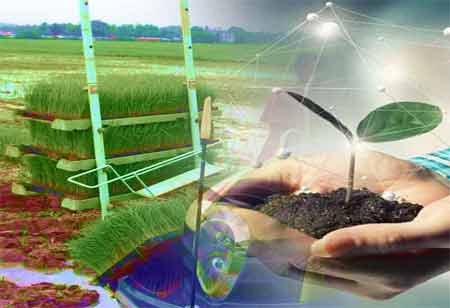Thank you for Subscribing to Agri Business Review Weekly Brief
Latest Developments in Agrifinance
The agricultural and food industry is embracing technological advancements like precision agriculture, robotics, and vertical farming but faces challenges in achieving the sustainable development goal to end world hunger by 2030

By
Agri Business Review | Thursday, May 02, 2024
Stay ahead of the industry with exclusive feature stories on the top companies, expert insights and the latest news delivered straight to your inbox. Subscribe today.
New finance mechanisms are boosting demand for agritech solutions to help farmers transition to sustainable farming practices, combat climate change, and feed the growing population.
FREMONT, CA: The agricultural and food industry is embracing technological advancements like precision agriculture, robotics, and vertical farming but faces challenges in achieving the sustainable development goal to end world hunger by 2030. The OECD-FAO Agricultural Outlook 2022-2031 suggests that to achieve the Zero Hunger target and reduce direct GHG by 6 percent, overall agricultural productivity needs to increase by 28 percent over the next decade. Many farmers struggle to maintain their farms and invest in future-proofing, with half of the world's 440 million farmers unbanked. Access to finance is a universal issue, and the will to change is often lacking.
In 2024, the market must work on breaking down barriers preventing farmers from embracing sustainability and emerging novel mechanisms for agricultural finance to boost the adoption of new technologies to modernize farms. Enabling farmers is key to a sustainable future.
Smartphones are revolutionizing the agricultural sector by providing farmers access to financial services, such as microloans and direct payments for goods and services. This can improve livelihoods in developing countries, where many communities rely on local farmers for food. As of 2020, only 28 percent of the population in sub-Saharan Africa had access to the internet, indicating slow progress.
Insurance offers security for farmers, as it is difficult for financial institutions to fund farmers due to the unpredictable nature of the agricultural business. By providing transparent, unmanipulated digital data from weather stations and farms on the blockchain, blockchain technology can assist in resolving this problem. Farmers can better manage risks and become less susceptible to the negative effects of weather occurrences and equipment failure thanks to the speedy processing of claims and automatic payouts made possible by this.
Green loans from traditional financial institutions are gaining popularity as they offer more favorable terms for farmers transitioning towards sustainable practices and countering climate change. These sustainability-linked loans require farmers to meet specific requirements during the loan term, with technology provided to measure and verify changes. For sustainable farming to become mainstream, it must be short-term profitable, and green loans are expected to see more movement in the next year. The carbon offsetting industry also facilitates real action by pre-paying farmers to adapt to climate change and resource scarcity. The World Bank discusses this transition's $80 billion annual investment requirement. In the short term, funding for agricultural sustainability could come from private companies aiming to reach netzero.





